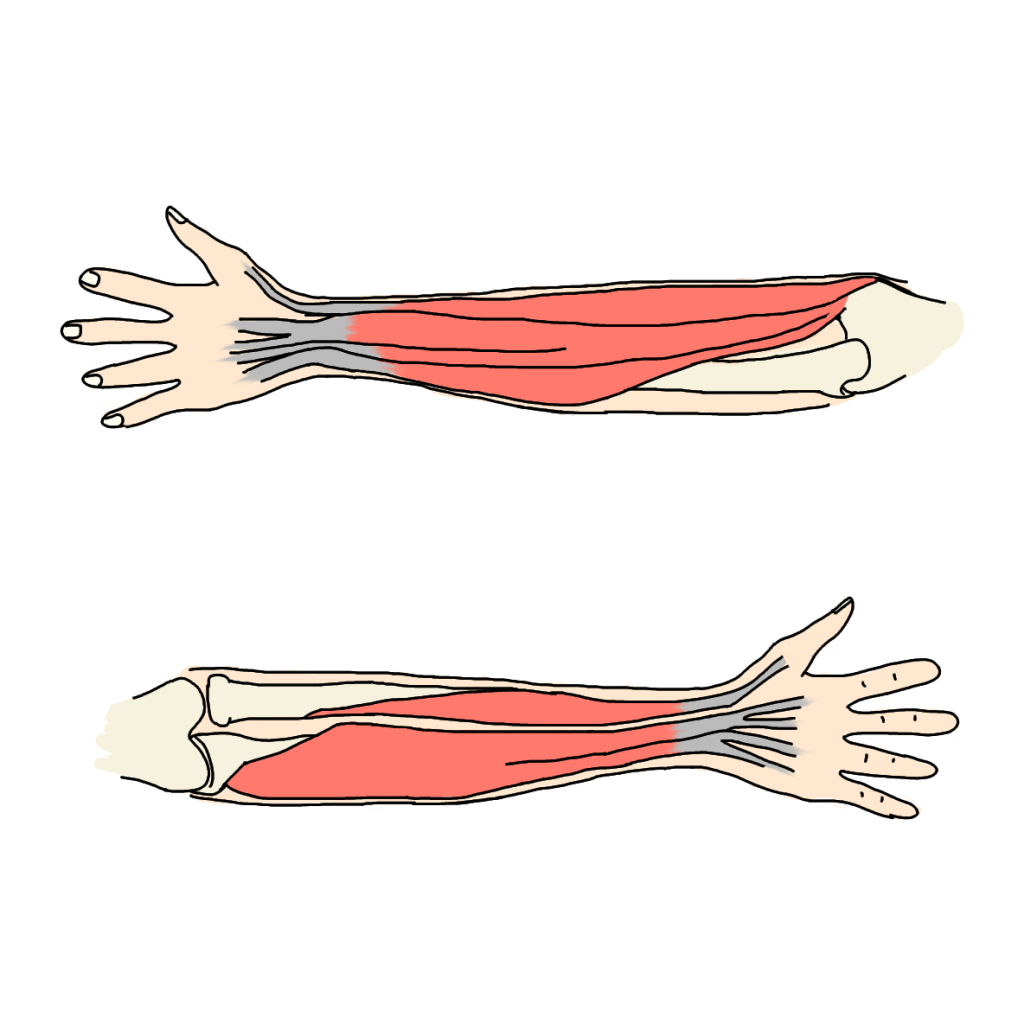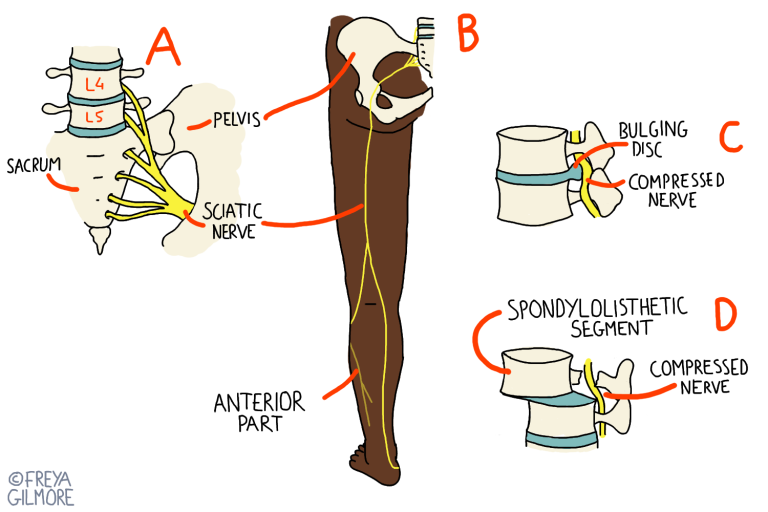Tennis elbow is a painful condition affecting the outside of the elbow. More specifically, it occurs where the wrist extensor muscles meet the elbow. The wrist extensors are the forearm muscles that allow you to bring your wrist back, as if you were playing a backhand shot in tennis.

You can develop tennis elbow even if you’ve never played: it’s due to a chronic strain on the muscles from any activity. Even prolonged desk work can put pressure on the extensors, for example if you have your forearm lower than the desk, and your wrist works harder to let you reach the mouse.
Prolonged overuse of these muscles can cause inflammation and micro tears to the end of the muscle, the tendon, and just where the soft tissues attach to bone. The technical name for that bit of bone is the epicondyle. So tennis and golfer’s elbow are forms of epicondylitis.
The inflamed area can be very tender to touch, and irritated by exertion too. It is unlikely to be warm to the touch, and symptoms will usually increase over time before plateauing.
Golfer’s Elbow
Whereas Tennis Elbow affects the wrist extensors on the outside of the elbow, Golfer’s Elbow affects the flexors, on the inside. As above, you don’t need to play golf to develop the condition. Pain around the elbow is the same, and typically worse when the muscle is engaged: when the wrist is flexed forward. Activities like changing gear in the car or picking up a full kettle might bring on symptoms.
Diagnosing Golfer’s and Tennis Elbow
When your osteopath takes your case history, these diagnoses are generally quite clear already. We have some quick tests we can perform alongside usual examination to help rule the diagnosis in or out too. No imaging or further investigation is needed.
Managing Tennis Elbow
One approach is to manage the symptoms while also easing the load that caused the issue in the first place. Are you overusing the forearm muscles to accommodate an elbow or shoulder problem? Your osteopath will cover these areas in your case history and examination. Improving movement or reducing pain in these joints might be enough to let the epicondylitis resolve itself.
As for managing the symptoms themselves, massage and stretching to increase the capacity of the muscle is often a good place to start. Mobilising the joints of the wrist may also be appropriate before looking further afield. Expect advice including exercises for you to do between your appointments for the best outcome.
Tennis Elbow Advice for Athletes
We can give you tailored advice about heat, ice, exercises, and lifestyle changes at your appointment. But broadly speaking, people who play racket sports may find their symptoms ease when their handle is broader. This is mostly because less tension is required from the muscles that have become problematic. Simply wrapping an additional layer of grip tape over your handle may be enough to make a difference. Similarly, you might find that a lighter racket helps to ease the load on your arm and improves your symptoms.
If you’re ready to address your pain, book in with Barnes for a personalised treatment and management plan.
Click here to make an appointment for your elbow pain in the Bristol area


